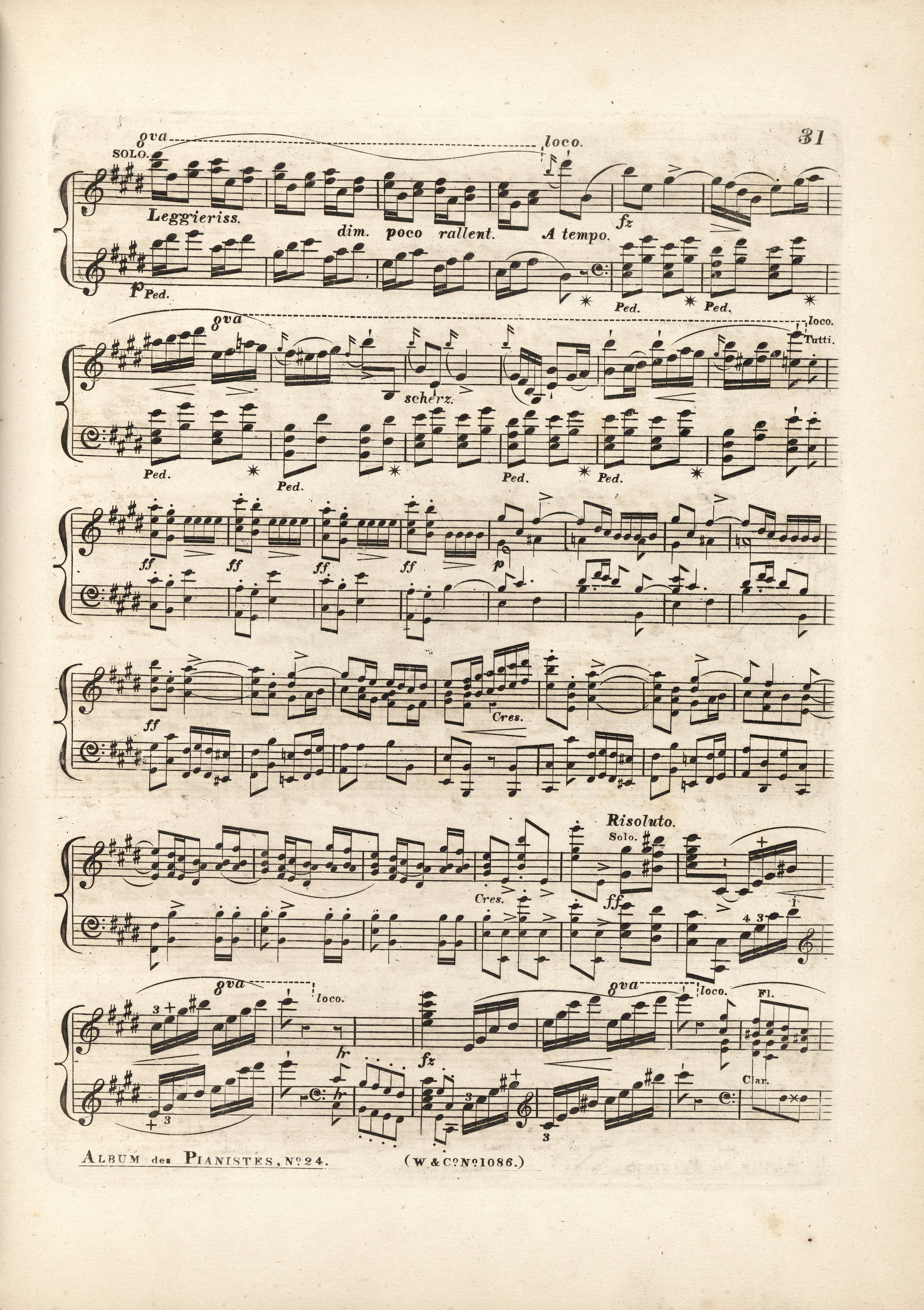Op. 2, Variations in B♭ major
Op. 10, 12 Etudes
Op. 11, Concerto in E minor
Op. 21, Concerto in F minor
Op. 22, Polonaise in E♭ major
Op. 24, 4 Mazurkas
Op. 25, 12 Etudes
Op. 26, 2 Polonaises
Op. 27, 2 Nocturnes
Op. 28, 24 Preludes
Op. 30, 4 Mazurkas
Op. 35, Sonata in B♭ minor
Op. 50, 3 Mazurkas
Op. 63, 3 Mazurkas
Op. 64, 3 Waltzes
(Op. 4), Sonata in C minor




Op. 11, Concerto in E minor, Mvt III
The longer slur of GE3 corresponds with its range to the slur featured in the next passage (bars 124-126) in FE. Since the aforementioned slur of FE, having been added probably in the last phase of proofreading, seems to be more credible, it cannot be excluded that the version of GE3 may correspond to the composer's intention. Therefore, it can be considered a variant of uncertain authenticity. In such a context, both versions have practically the same meaning.
Compare the passage in the sources »
category imprint: Differences between sources
issues: GE revisions
notation: Slurs



